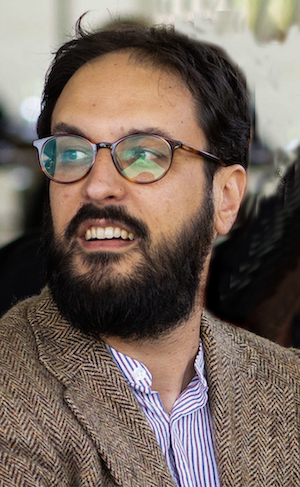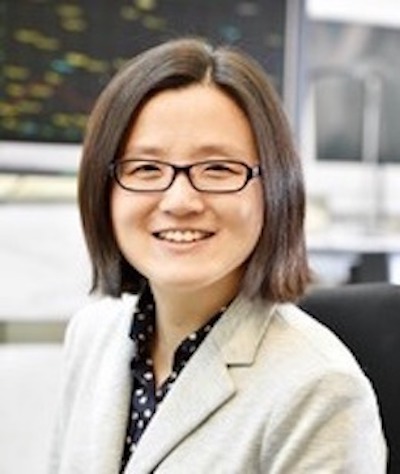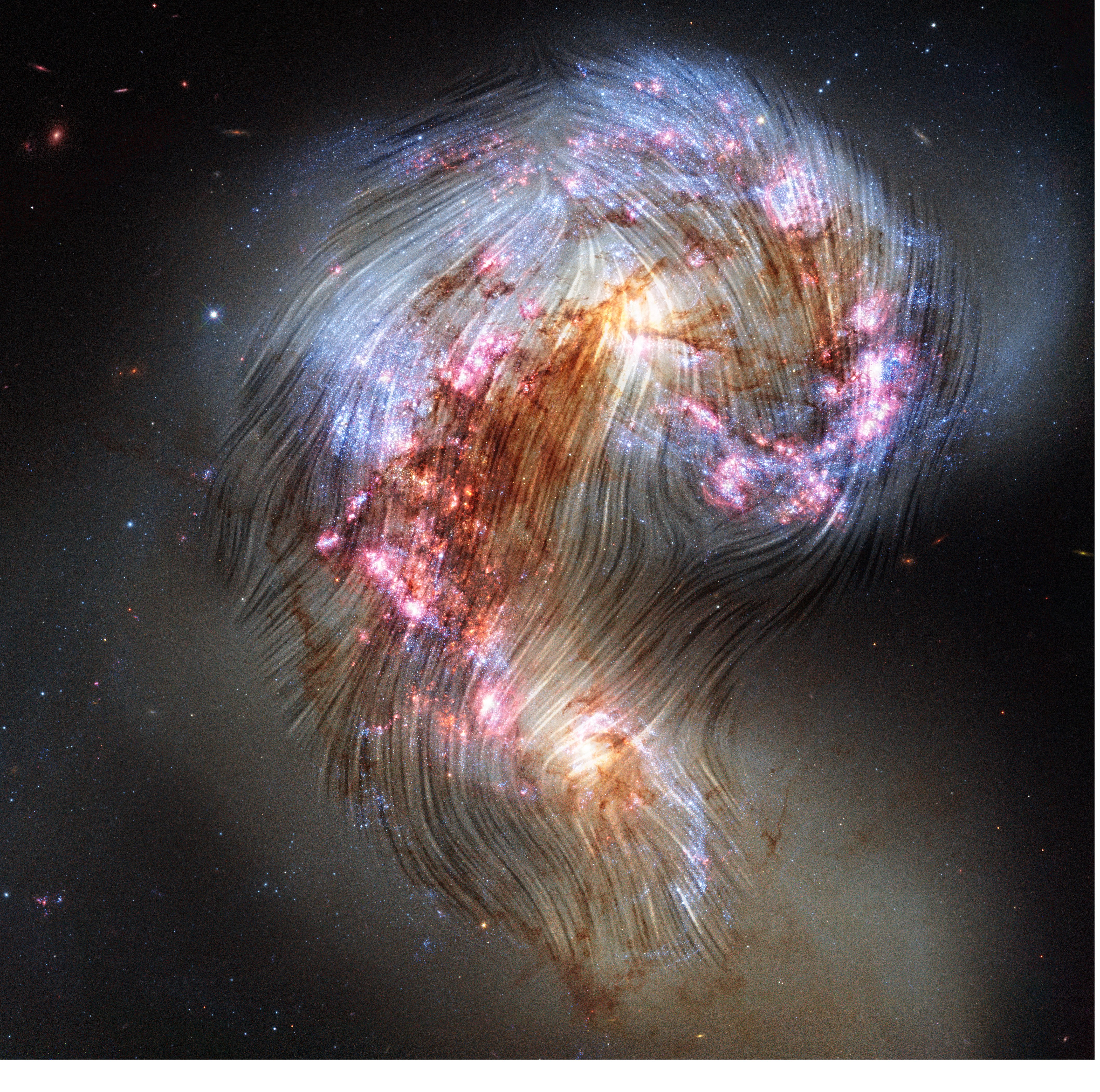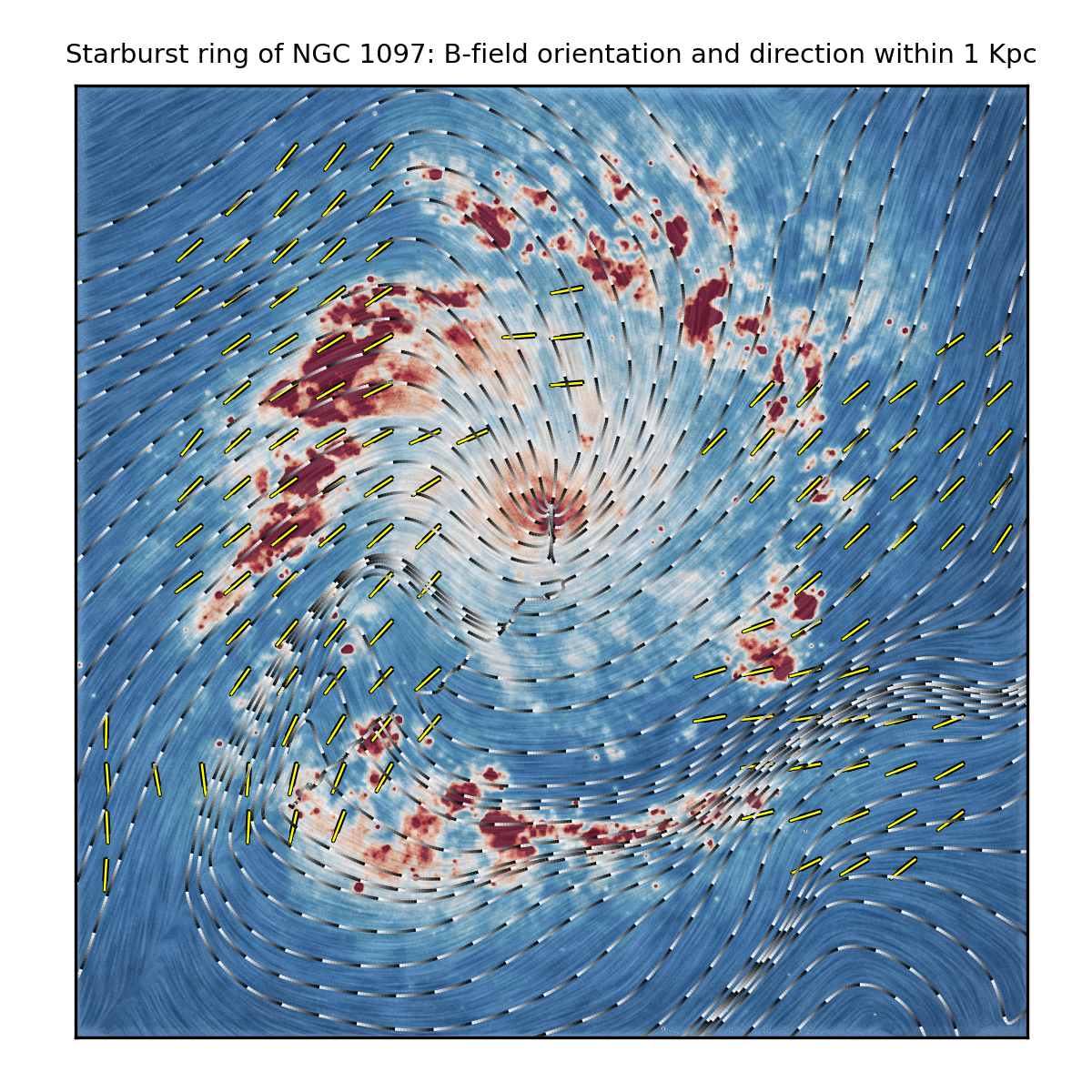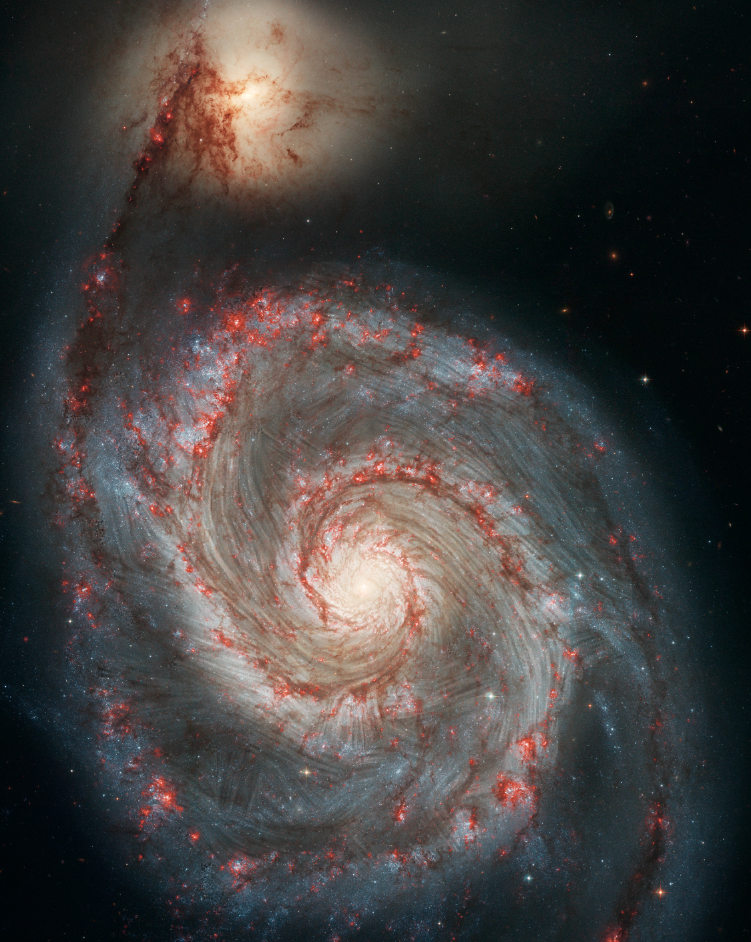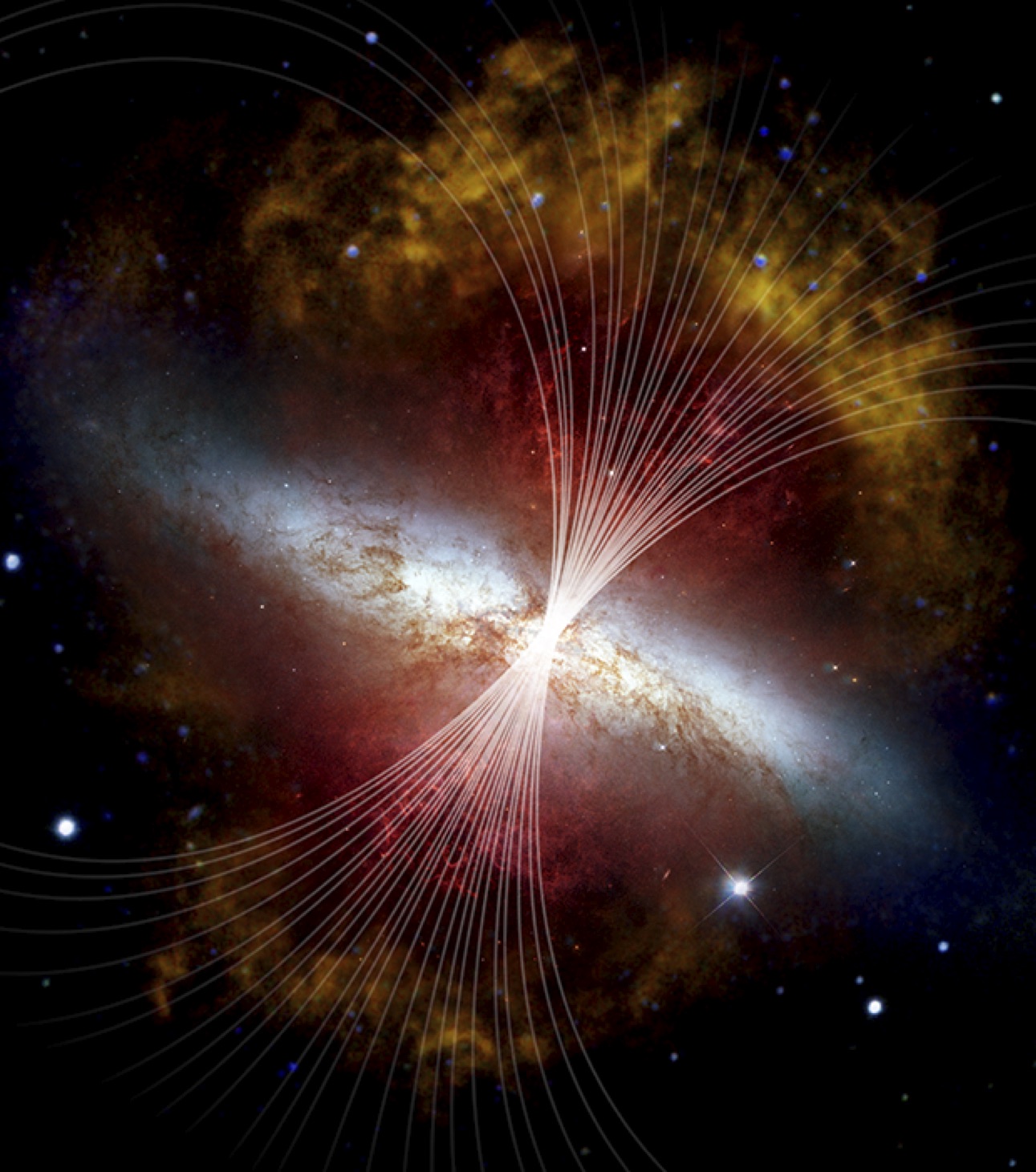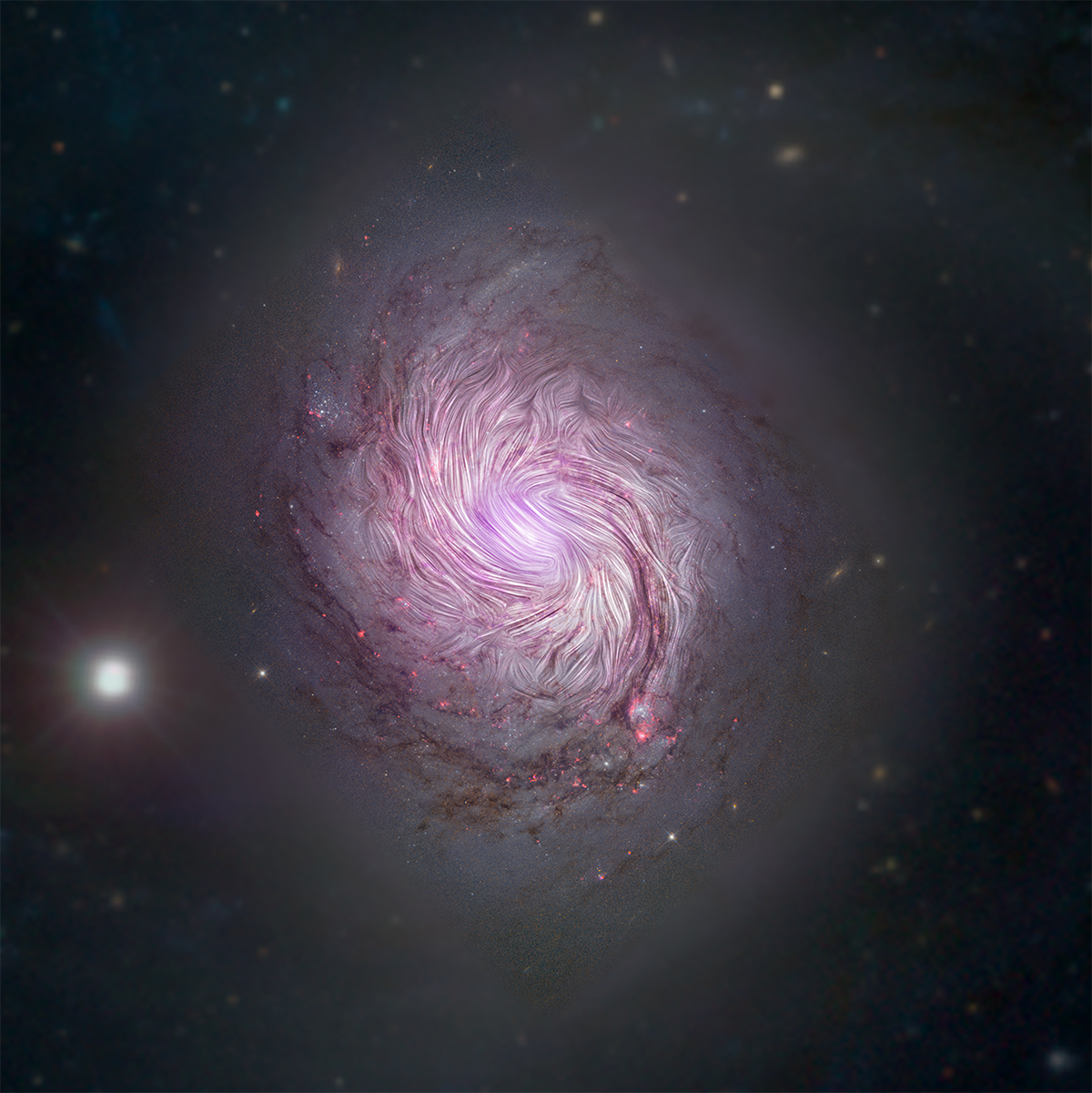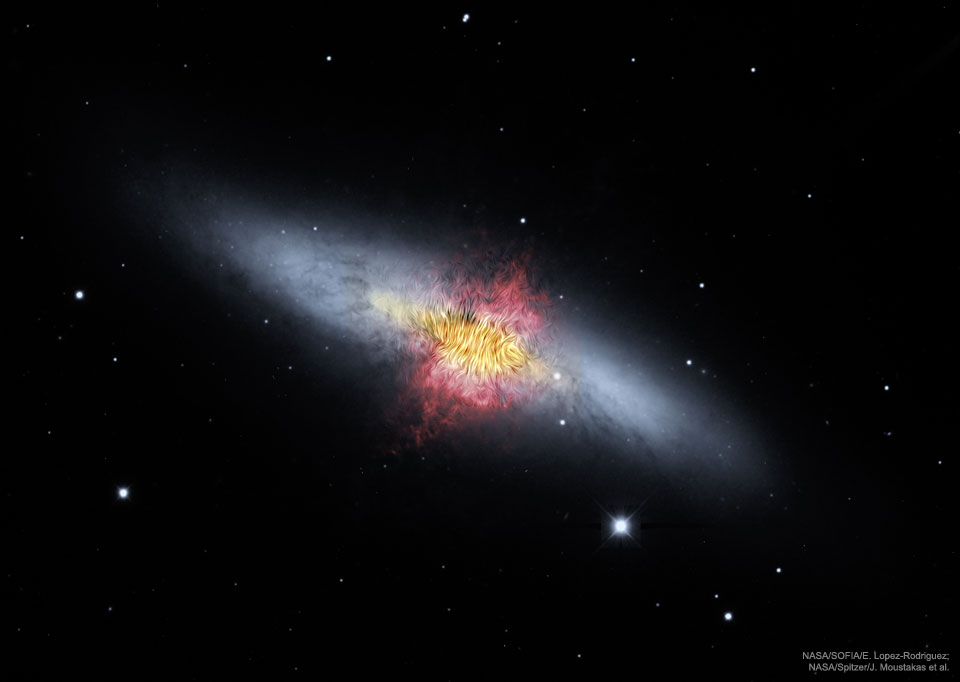About
This Joint Legacy Program aims to construct a comprehensive empirical picture of the magnetic field strength and structure in the multiphase ISM of galaxies. For the first time, we will construst a FIR polarimetric survey of nearby galaxies. We will combine these results with radio polarimetric and optical spectroscopic observations to obtain magnetic field strength/structure and gas dynamics as a function of host galaxy properties and kpc-scale galactic environment. The wide-field, multi-wavelength polarimetric observations from this Legacy Program will be a transformative leap that will establish the foundational framework of the kpc-scale magnetic field structure in the molecular gas disks of nearby galaxies.
Team
Our team is comprised of an international group of recognized experts in the field of magnetic fields of galaxies, IR and radio polarimetric observations, and Herschel and HAWC+ instrumentation. The primary aim of this team is to maximize the science output of the FIR and radio polarimetric data to understand the magnetic fields in the multi-phase interstellar medium of galaxies. Secondary to the science is a strong commitment to ensuring as appropriate the best possible balance in demographics, including gender, career position, and nationality.
The overall responsibility of this program resides with the two co-PIs, Dr. Enrique Lopez-Rodriguez in the USA and Dr. Sui Ann Mao in Germany, and their Science Working Group.
The project’s work is structured into several teams, and each team lead reports to the co-PIs. The Science Working Group oversees the efforts to achieve the science goals of this project, and their members inspire and motivate the rest of the team to build linkages between the SOFIA Legacy project and other aspects of the astronomical community. In particular, this includes collaborations with teams from large projects on other observatories (like the nearby galaxy surveys on Spitzer and Herschel) and ongoing closely related work (like ground-based and balloon observations of sub-mm polarization).
Science Working Group
| Member | Institution |
|---|---|
| Rainer Beck | Max Planck Institute for Radio Astronomy, Germany |
| John Beckman | Instituto de Astrofisica de Canarias, Spain |
| Susan Clark | KIPAC/Stanford University, USA |
| Daniel Dale | University of Wyoming, USA |
| Tanio Diaz-Santos | University of Crete, Greece |
| Darren C. Dowell | JPL, USA |
| Doyal A. Harper | University of Chicago, USA |
| Annie Hughes | IRAP, Toulouse, France |
| Pamela Marcum | NASA Ames Research Center, USA |
| Ignacio Moral Castillo | Instituto de Astrofisica de Canarias, Spain |
| Sergio Martin Alvarez | KIPAC/Stanford University, USA |
| Evangelia Ntormousi | University of Crete, Greece |
| Gina Panopoulou | Chalmers University |
| William T. Reach | SOFIA Science Center, USA |
| Julia Roman-Duval | Space Telescope Science Institute (STScI), USA |
| Kandaswamy Subramanian | Inter-University Centre for Astronomy and Astrophysics, India |
| Mehrnoosh Tahani | KIPAC/Stanford University, USA |
| Konstantinos Tassis | University of Crete, Greece |
| Ngoc Tram Le | Leiden university, Netherlands |
| Ellen Zweibel | University of Wisconsin, USA |
Data
Publications
Tools
Python scripts will be available soon.
| Description | Link |
|---|---|
| GitHub repository of the Legacy Program | galmagfields in GitHub |
| Python code used for the analysis of M51 | Borlaff et al. (2021; Zenodo link) |
| White paper describing the data format of HAWC+ | Gordon et al. (2018) |
